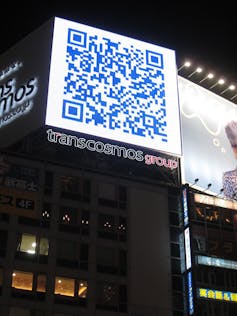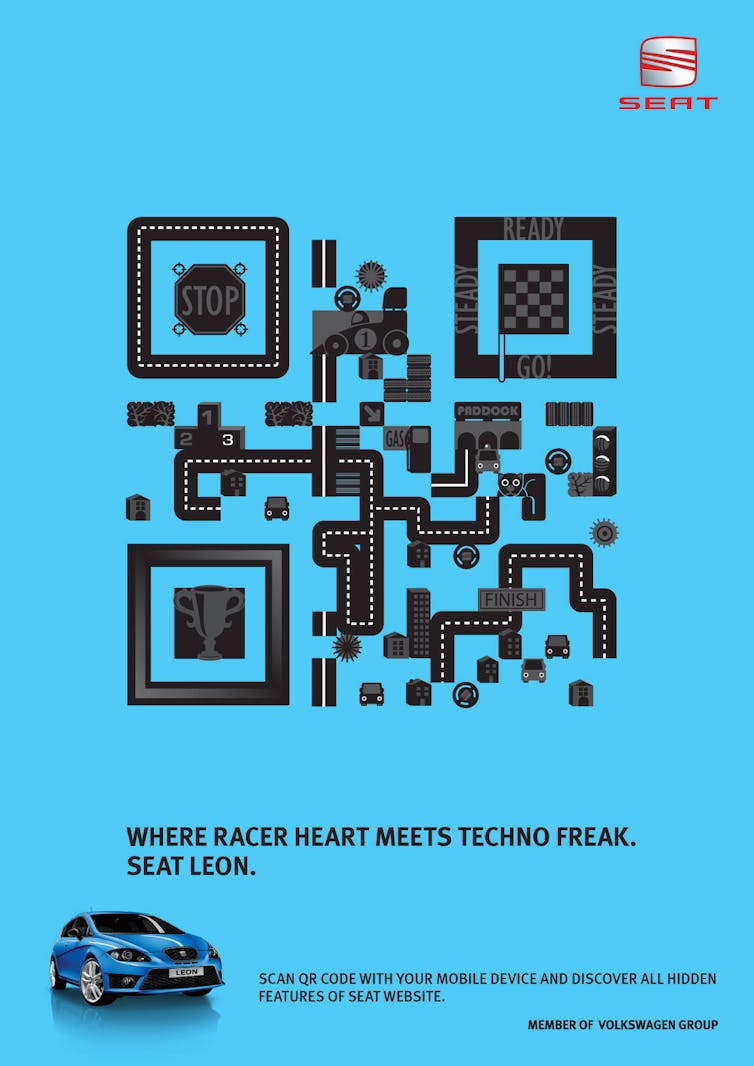How to Decorate QR Codes to Make Them More Attractive

The popular arrays of black and white squares that we scan today even to view restaurant menus were originally created to streamline inventory processes in the automotive industry. Its unpretentious appearance is ideal for fulfilling its original function in many other situations, such as mobile payment processes or registering access to an event venue.

Wikimedia Commons, CC BY
However, their functional and unattractive appearance poses a challenge as an advertising element: how to get QR codes to attract the public’s attention and scan them?
They’re everywhere
The need to avoid physical contact during the Covid-19 pandemic has greatly contributed to the use of QR codes. Many people who were previously unaware of their usefulness or did not feel the need to use them eventually became familiar with them and integrated them into their daily lives.
Thought to be nothing more than a passing fad with a pretense of modernity, they have proven themselves to be a fundamental tool for connecting the physical world with digital content.
According to Statista research, 99% of healthcare workers marketing agree that QR is essential to attracting Gen Z, and 98% consider it a key element of outdoor digital advertising.
It looks like they will continue to be a part of advertising graphics, and creatives and designers will have to decide how to make their two-tone design fit the aesthetic of an ad or product packaging, or how to turn it into an element. This will capture the audience’s interest, inviting them to browse.

seat
Prominent examples are the 2011 SEAT Ibiza campaign, which developed a QR code consisting of road signs, road sections and other elements, or the 2020 AdNews magazine cover, based on a code consisting of graphic elements symbolically representing the year of the pandemic.
Technical limitations
To change its appearance without compromising its functionality, it is important to understand its structure and operation. They consist of a seemingly random grid of two-color modules that store information in a binary language (white=1, black=0). Some of these modules contain redundant information, so the code remains readable in the event of breakage or corruption.
This allows for partial retouching of its appearance, provided that the areas containing functional patterns, the silent zone around the matrix and other elements necessary for decoding the contained information are not changed.

Bobmat
Since the scanner will try to determine whether each module is white or black, it is important to maintain a good level of contrast when changing colors, as well as covering most of the quad area with an appropriate tone, especially in relation to the central part. region.

Rachel Avila
Changing the appearance of codes manually can be very labor intensive and can make them, while still scannable, less reliable once manipulated.
On the other hand, there are many factors that can affect readability that are beyond the designer’s control, such as the lighting conditions of the environment, the quality of the camera with which the code is scanned, or the possibility of the QR code being scanned. deteriorate due to exposure to the elements. This may mean that the time and resources spent on an elaborate project are not worth it.
Automated Personalization Strategies
On the Internet we can find various applications, some of them equipped with generative artificial intelligence that will allow us to make QR codes more attractive automatically by embedding images in the code, changing the shape and color of the modules or combining images. with matrix.

Rachel Avila
Sometimes the results are such complex and varied illustrations that they are difficult to identify as scannable codes. Characteristic modules and functional diagrams are perfectly integrated into the illustration, becoming almost invisible.
Recent advances in artificial intelligence are ushering in a new era in which QR codes can be presented in complex and attractive illustrations. Their appearance may be so far removed from the classic matrix of black and white squares that they may not be perceived by the user as scannable codes.
This opens up a new range of creative possibilities, but at the same time raises the question: can a QR code that is not identified as such, no matter how attractive it may be to the eye, really motivate scanning?

Nxiao
Advertising effectiveness
Aesthetic personalization of QR codes seems to be a promising trend that motivates the research community to continue innovating and optimizing existing algorithms.
However, there has been virtually no empirical research examining how the visual aspect of code influences the arousal of user curiosity, its impact on perceptions of advertised brands and products, or the extent to which there is a relationship between code aesthetics and scanning goals.
However, all indications are that their effectiveness can be increased by improving their appearance, decorating them, incorporating branding elements or visual cues related to the target content.
The key is to find a balance between aesthetics and functionality, ensuring that any visual modifications remain scannable.
